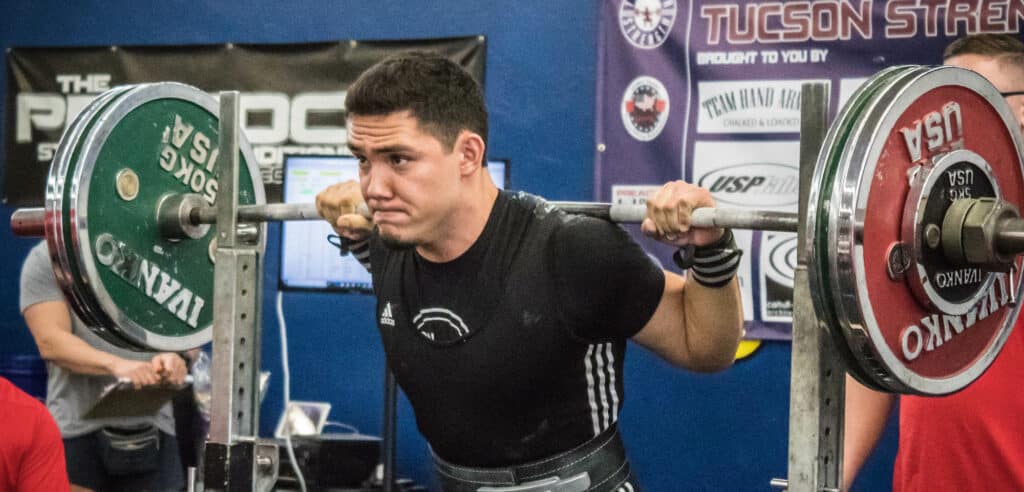 I wanted to write a follow up post on my squat article I posted last week. I have received some questions on some other common mistakes and wanted to share them.
I wanted to write a follow up post on my squat article I posted last week. I have received some questions on some other common mistakes and wanted to share them.
Many times people will come to have their squat analyzed and fixed and I will look at everything and with a quick glance there isn’t anything overly standing out as wrong. The bar placement is good, foot position seems decent, and the then I watch the squat from the front view.
The descent ends up being one big inhale till depth is hit. Most lifters don’t even realize they are doing this, or that it can effect squat dynamics considerably. Whether you are doing a single rep or multiple, it is crucial that a deep abdominal breath is taken at the top of the squat, and that the breath is held from the top, through the bottom. The air should be let out through the sticking point on the ascent, but with tension and force.
Mastering breathing means mastering intra abdominal pressure (IAP). The pressure you develop is what will stabilize your “core” while holding the weight on your back. It doesn’t matter how hard you are trying to brace your abs if you don’t have enough pressure built up from a solid breath. Lifting heavy things is all about tension. Poor breathing mechanics will lead to a sub-maximal squat feeling like it can crush you. Breathing in at the top should also be practiced by breathing deep into the abdomen and driving the air down. Too many times I see lifters taking a deep breath in at the top only to shrug their shoulders up with the breath and losing bar tension at the top. If you record your squat from the back and it looks like your doing a shrug with your inhale you have some work to do. There could be lots of reasons for this.
A simple fix could be to try and take a deep inhale though your nose instead of the mouth. Inhaling through the nose can stimulate a diaphragmatic breath. Mouth breathing is usually a shallower upper chest breath. If this doesn’t work we need to look at chest position under the bar. Too many people keep thinking about “chest up” on the squat, which is a cue that F–ks up more squats than I can count. Chest up means don’t let your chest fall forward, it doesn’t mean flare your rib cage to the ceiling. When you flare your ribs up you pretty much stretch out the diaphragm and you can’t develop maximal IAP with stretched out diaphragm. This is why setup under the bar is everything. If you start your wedge with a flared rib cage expect the rest of the squat to be a roll of the dice. Instead of thinking about chest up, think about pulling the shoulder blades down. This should help direct the breath better. If your ribs are flared all the time even without a bar on your back then your assistance exercises should be focused on trunk/core work that work on rib/lower back position rather than spending hours destroying your legs with leg presses, box squats, and loaded step ups. Your legs aren’t the problem, your breathing and trunk position are.
